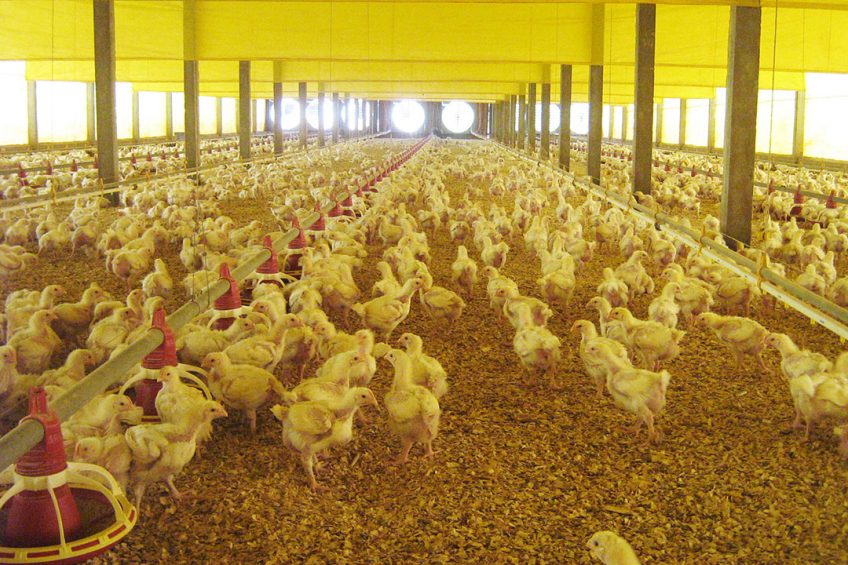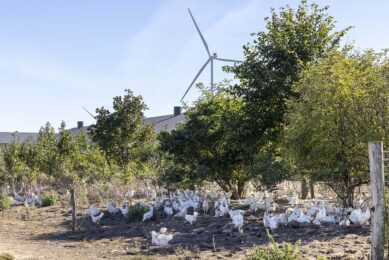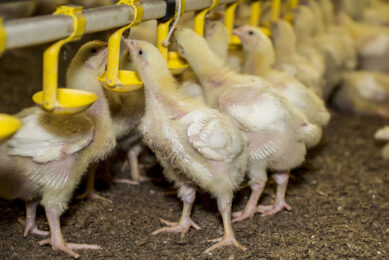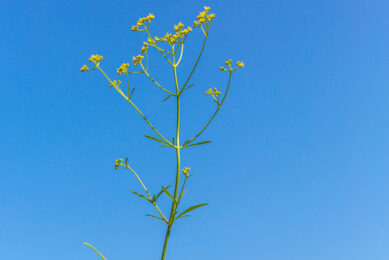Addressing seasonal effect on slower growing chickens

Slower growing broilers tend to adjust their feed intake according to environmental temperature, more than faster growing broilers. To meet standard carcass weights demanded by processors, producers of slower growing birds need to be sharp, especially during hot days in summer.
In several countries increased market demand for slower growing chickens has changed the landscape of the broiler industry over the last few years. Also, for these markets retailers require standardised carcasses and cut-up weights all year round in order to serve consumers with consistent portion sizes. Within the stipulations of certain concepts, such as maximum average daily gain (ADG) or minimum age, broiler growers need to manage the growth rate and final body weight of their chickens throughout the whole year to be as close as possible to the threshold. This helps to minimise costs and to maintain predictability of the final weight for the processing plant.
Different reaction to environmental temperature
Slower growing breeds are selected for excellent robustness with the best-balanced reproduction, growth rates, feed conversion rate (FCR) and meat yield. The selection for bodyweight gain is not a priority and as a result slower growing chickens have less appetite. These chickens adjust their feed intake according to the environmental temperature. When the temperature rises, they first reduce their feed intake and consequently their daily growth in order to survive. During the cold season, access to free-range areas increases their energy requirements for maintenance. They eat more feed to get more energy, thus getting also more protein and faster growth. Flocks grown indoor in well insulated and heated houses are almost not affected.
More than only high noon temperatures, it is the combination of hot days (> 35°C) and tropical nights (> 20°C) which is affecting growth most. These extreme conditions are expected to be seen more and more around the world. Across Europe, the variation in number of days needed to reach market weight ranges from less than 1 day in Northern Europe to 7 days in some parts of Southern Europe where conditions can be much more extreme.
Tools to meet the bodyweight targets
Several techniques can be used with good success to reduce the growth rate during wintertime: feed dilution, mash feed, meal feeding and early natural light. Regular sampling of body weights from the beginning of the growing period is the key for successfully growth monitoring. Reaching target bodyweights during the warmest months is very difficult. Feeding crumbs or short pellets, replacing some starch by fat, increasing amino-acids levels and feeding during the night are necessary but not sufficient as flocks may reduce their feed intake by up to 15%. Field experience shows that there is also a need to increase the birds’ energy losses to make them eat and grow more during summertime.
Balance the equation and maintain growth
This is all related to the feed energy intake of which about 70% is released in the environment through sensible and latent heat. A single slow growing chicken would release about 40% less heat and an intermediate growing chicken about 20% less than a fast growing broiler at the same bodyweight (see Figure 1), simply because their daily feed intake is much lower. If we take into consideration the lower stocking density normally used for slower growing concepts, the actual calories released per unit of house surface is 1.5 to 2.5 times less than for fast growing broilers. On the other hand, most of the fast growing broilers are processed between 35 and 45 days, when their feathering is just completed, while slower growing broilers normally live from 50 to more than 80 days. Feathering is actually an excellent insulating material. According to Brian Fairchild (University of Georgia), broilers are 3.7 times better insulated per unit of body surface at 45 days versus 25 days. This means that slower growing chickens are wearing a “warm coat” during the 2 to 6 last weeks of their life.
Figure 1 – Estimate of the energy released per hour per bird

Cooling technology for slower growing broilers
Since the beginning of the 90’s, the poultry industry has learned how to cope with the effect of hot weather on performances and has developed technologies relying on evaporative cooling and air speed to minimise bird losses and growth delay. With slower growing chickens, it is more a matter of heat transfer at bird level than heat dilution at house level; air speed more than air flow. Nevertheless, the effect of air speed alone decreases as temperature rises and may become insufficient to remove enough heat energy from the birds to allow them to eat and grow. When the climate dictates air must be cooled in addition to providing air speed, the technology used most around the world is evaporative cooling. This often uses cellulosic or plastic pads, but also foggers. It takes seven times more energy from the environment to evaporate 1kg of water than to warm it up from 20 to 100°C. The objective is to cool the air, so that air movement takes away more convective heat from the birds. As a consequence, birds reduce panting and are less affected by high air humidity produced by water evaporation.
Tunnel ventilation is the most efficient way to create a uniform high air speed across birds in indoor systems. Other systems don’t achieve the same efficiency in hot conditions, but are better designed for all-weather conditions. Most of the time, a maximum of 1 to 2 m/s is enough for slow and intermediate growing chickens. Increasing air speed means more air flow or less cross-sectional area. In longitudinal ventilation systems, seasonal deflectors increase average air speed (see picture). When heat production at house level is low and the house insulation value is good, they can be lowered to increase savings in fan capacity and electricity usage. A negative pressure build-up of up to 20-30 Pascals along the house is acceptable for most of the fans in the market.
Air mixing can be a good option in free-range housing systems or any other system using pop holes, for which the efficient use of negative static pressure ventilation is not an option. It may also be a good solution, associated with large sidewall openings, for indoor systems in locations where the influence of natural wind is permanent due to a combination of climate and topography. Altitude can be a positive factor as it decreases night temperatures.
Why not use a “cheap low tech” cooling technology?
The University of Arkansas (Yi Liang, Susan E. Watkins, David Mc Creery and Tom Tabler) has been extensively testing a system based on water sprinkling. They stated that it can save up to 70% water and 40% when used in combination with pad cooling in comparison with pad cooling alone. Litter moisture is similar and air humidity is lower with sprinklers compared to pad cooling. The system is used in practice in the USA for conventional broilers. Pad cooling is still preferred when harsh heat waves occur.
The principle is to distribute, under a water pressure of 2 to 3 kg, 1mm droplets as evenly as possible on the birds in a 6-8 meters diameter circle around each sprinkler which should be evenly placed 4-5 meters apart to ensure uniform floor coverage. The fine rain is well appreciated by the birds which then tend to stand up and sometimes open their wings. The energy required to evaporate water is taken from the birds themselves instead of the air, so the house condition remains hot and relatively dry.
The sprinkling technology is coming from the greenhouse industry. The On-Off timing is critical to prevent wet litter. At first the cooling stage is 20 seconds “On” and 30 minutes “Off”. During the third and latest stage, it is 30 seconds “On” and 5 minutes “Off”. Observation of the litter quality is critical while adapting the On-Off settings to lower stocking densities and slower growing chickens. The cost of the equipment is just a few hundred euros, depending on the automation and the size of the house. It is affordable even for conditions where the risk of being affected by hot weather is quite limited due to the latitude and the low number of cycles per year. This technology doesn’t necessarily require negative pressure ventilation. This is most welcome for free-range broilers and any kind of housing system using pop holes. For free-range systems basics like roof extensions above the pop holes, perpendicular shrubs and willow a few meters away from the house should not be forgotten. It helps attracting birds outside and reduce stocking density inside. It is also an essential part of the image of free range concepts while it improves the biodiversity of ranging areas.
Best of both worlds
The solutions developed for fast growing broilers in order to reduce the effect of the season on growth and performance are often seen as too expensive for slower growing chickens, especially in regions where the summer season is quite short. Pop holes also make negative pressure ventilation less efficient. The sprinkling system combined with tunnel ventilation or air mixing could be developed and adapted to the specific needs of slower growing chickens to better meet the evolving market developments and support predictability of the final body weights.
 Beheer
Beheer








 WP Admin
WP Admin  Bewerk bericht
Bewerk bericht